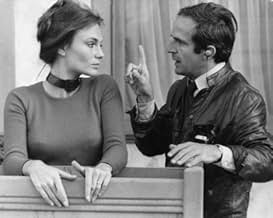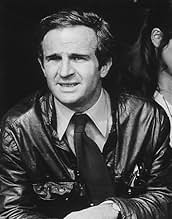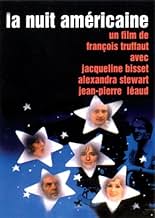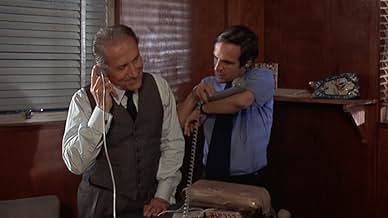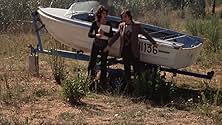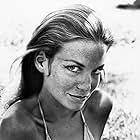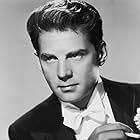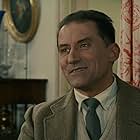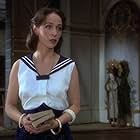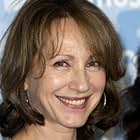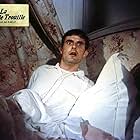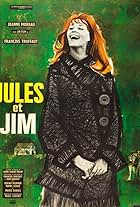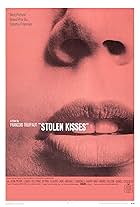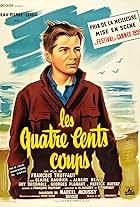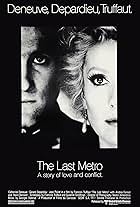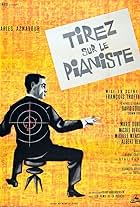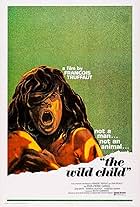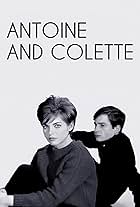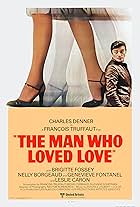A committed film director struggles to complete his movie while coping with a myriad of crises, personal and professional, among the cast and crew.A committed film director struggles to complete his movie while coping with a myriad of crises, personal and professional, among the cast and crew.A committed film director struggles to complete his movie while coping with a myriad of crises, personal and professional, among the cast and crew.
- Won 1 Oscar
- 13 wins & 7 nominations total
Jean-Pierre Léaud
- Alphonse
- (as Jean-Pierre Leaud)
Xavier Saint-Macary
- Christian
- (as Xavier Macary)
- Director
- Writers
- All cast & crew
- Production, box office & more at IMDbPro
Storyline
Did you know
- TriviaAfter the release of this film, Jean-Luc Godard sent François Truffaut a letter criticizing the way the film depicts filmmaking and called him a liar for it. Godard also criticized him for pandering to the mainstream, something they were both critical of filmmakers doing when they were critics at Cahiers du Cinema. Additionally, Godard went on to say that because the film was not truth and because the film was a hit, that they should make a film together about the filmmaking process; Truffaut would produce, Godard would direct, and they would co-write the script. Godard's return address was of Jacques Daniel-Norman, a virtually unknown filmmaker whose films were loved by Truffaut and Godard when they were film critics, hinting at a return to a simpler time. Ignoring this hint, Truffaut was insulted by the letter and responded by telling Godard that he is demeaning and pretentious and that he pretends to be poor, when in reality he was the wealthiest of their circle of friends. The response also included a line in which Truffaut flat out calls Godard a "shit". It is believed that this quarrel is what ended their lifelong friendship. Godard later regretted writing this letter, especially after Truffaut's early death in 1984 and went as far as to write a moving tribute to his former friend.
- GoofsSeveral takes are wasted trying to get a cat to drink milk from a tray. Eventually Joelle brings in "the studio cat" to do the scene. But the cat that drinks the milk is actually a third, different cat.
- Crazy creditsThis film is dedicated to Lillian Gish and Dorothy Gish.
- ConnectionsEdited into Day for Night: A Conversation with Jaqueline Bisset (2003)
Featured review
François Truffaut's "Day for Night" ("La nuit américaine") is a movie about the making of another movie, "Meet Pamela" ("Je vous présente Pamela"). From the snippets we see of "Meet Pamela", it looks like an insignificant and silly little film, even though its stars are fond of describing it to the press as a "modern tragedy." However, they mostly don't have time to philosophize about the larger meaning of "Meet Pamela"--they're just trying to film the darn thing!
"Day for Night" is an ensemble movie, showing how the many kinds of people on a film set surmount the many minor crises inherent in film-making. There are romantic entanglements and misalliances, as well as technical problems (e.g. the film's title refers to the necessity of shooting a nighttime scene using daylight and a special filter).
Valentina Cortese has some unforgettable, hilarious scenes as Severine, an alcoholic actress who can't remember her part. Also good are Nathalie Baye as an unflappable continuity girl; Jean-Pierre Léaud as an intense but callow young actor; and Jacqueline Bisset as an actress trying to survive the movie-making process after having suffered a nervous breakdown the prior year.
All these elements make "Day for Night" an entertaining movie. But upon reflection, I'm amazed at the craftsmanship it involved. Taking on the role of Ferrand, the director of "Meet Pamela," is Truffaut himself. He makes Ferrand into a professional, unassuming, and likable figure--it feels as though Truffaut put a lot of himself into his role. So it takes some conscious effort to disentangle Truffaut from Ferrand, but once that happens, Truffaut's astounding achievements become clear. As co-writer of the screenplay, Truffaut had a hand in everything that is said; as director of "Day for Night," he set up every shot in the movie. Even the shots in which he appears as Ferrand. Even the complicated shots that show the backstage workings of a movie set and feel so realistic that it's strange to think of them as having been set up. He shoots "Meet Pamela" unexceptionally, usually with a static camera (Ferrand-style) while the "real-life" scenes use hand-held cameras and other exciting techniques (Truffaut-style). It would probably take multiple viewings to appreciate all of what Truffaut did here.
I suppose this means that "Day for Night" is a noteworthy example of the "auteur theory." But that sounds like too dry and academic a summary for a movie that was made not only with superb skill, but also with a palpable love for cinema and love for life.
"Day for Night" is an ensemble movie, showing how the many kinds of people on a film set surmount the many minor crises inherent in film-making. There are romantic entanglements and misalliances, as well as technical problems (e.g. the film's title refers to the necessity of shooting a nighttime scene using daylight and a special filter).
Valentina Cortese has some unforgettable, hilarious scenes as Severine, an alcoholic actress who can't remember her part. Also good are Nathalie Baye as an unflappable continuity girl; Jean-Pierre Léaud as an intense but callow young actor; and Jacqueline Bisset as an actress trying to survive the movie-making process after having suffered a nervous breakdown the prior year.
All these elements make "Day for Night" an entertaining movie. But upon reflection, I'm amazed at the craftsmanship it involved. Taking on the role of Ferrand, the director of "Meet Pamela," is Truffaut himself. He makes Ferrand into a professional, unassuming, and likable figure--it feels as though Truffaut put a lot of himself into his role. So it takes some conscious effort to disentangle Truffaut from Ferrand, but once that happens, Truffaut's astounding achievements become clear. As co-writer of the screenplay, Truffaut had a hand in everything that is said; as director of "Day for Night," he set up every shot in the movie. Even the shots in which he appears as Ferrand. Even the complicated shots that show the backstage workings of a movie set and feel so realistic that it's strange to think of them as having been set up. He shoots "Meet Pamela" unexceptionally, usually with a static camera (Ferrand-style) while the "real-life" scenes use hand-held cameras and other exciting techniques (Truffaut-style). It would probably take multiple viewings to appreciate all of what Truffaut did here.
I suppose this means that "Day for Night" is a noteworthy example of the "auteur theory." But that sounds like too dry and academic a summary for a movie that was made not only with superb skill, but also with a palpable love for cinema and love for life.
- marissas75
- Jan 15, 2006
- Permalink
Details
- Release date
- Countries of origin
- Official site
- Languages
- Also known as
- Day for Night
- Filming locations
- Aéroport Nice-Côte d'Azur - Nice, Alpes-Maritimes, France(press conference)
- Production companies
- See more company credits at IMDbPro
Box office
- Gross US & Canada
- $509
- Opening weekend US & Canada
- $11,206
- Apr 25, 1999
- Gross worldwide
- $509
Contribute to this page
Suggest an edit or add missing content



